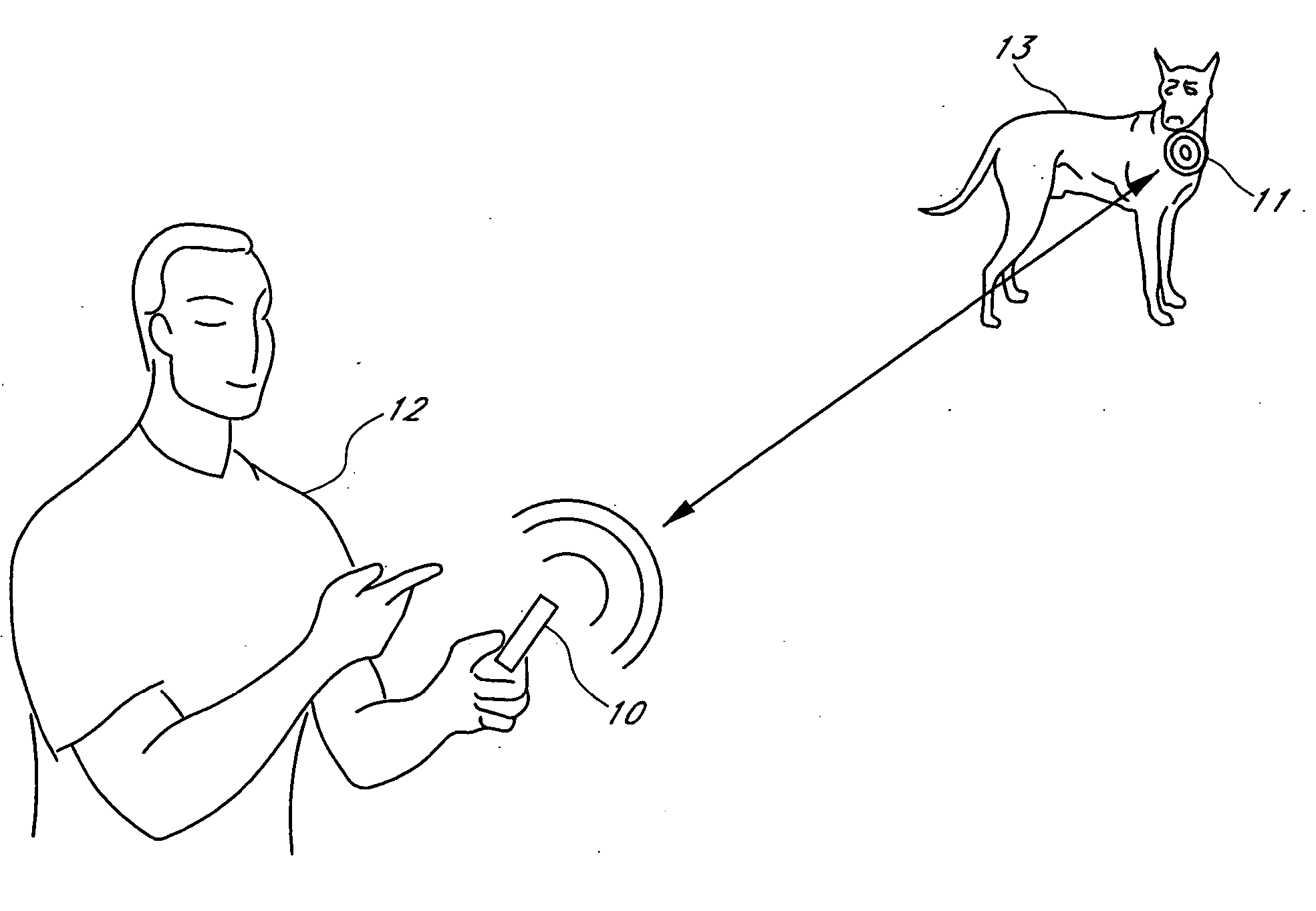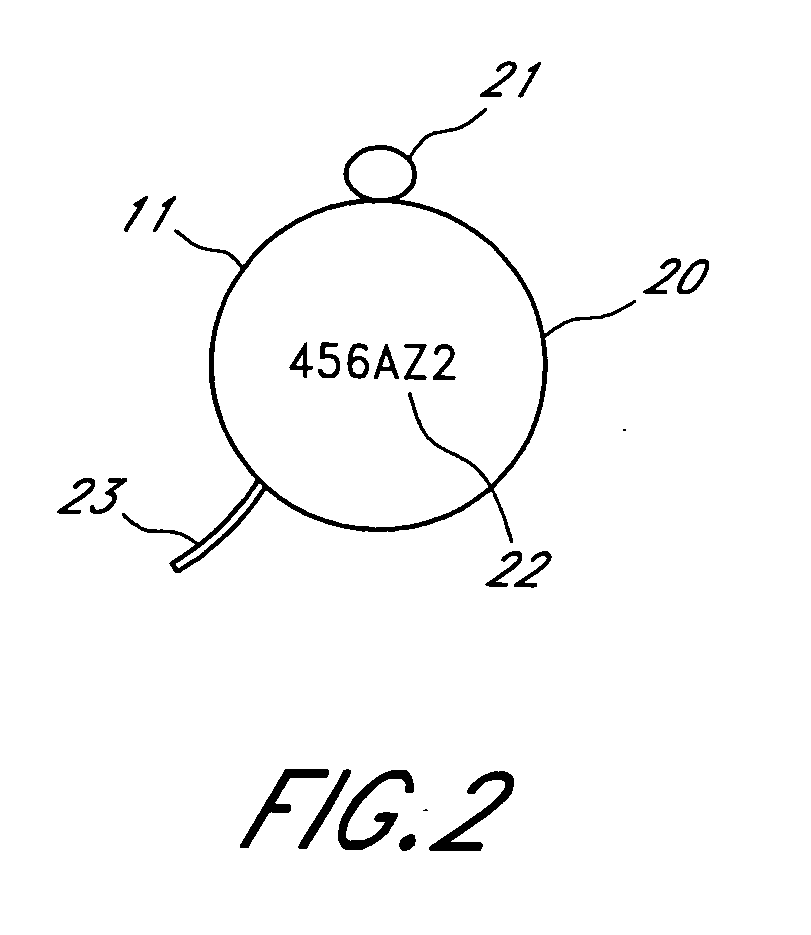Article locator system
a technology for locating devices and objects, applied in the direction of mechanical actuation of burglar alarms, using reradiation, instruments, etc., can solve the problems of children wandering away from their caregivers at any time without warning, and many of these devices are limited in their range of applications, so as to achieve easy and non-obtrusive attachment, small size
- Summary
- Abstract
- Description
- Claims
- Application Information
AI Technical Summary
Benefits of technology
Problems solved by technology
Method used
Image
Examples
Embodiment Construction
[0059] A. Overview
[0060] The present invention is directed to a radio frequency location system in which a locator device is used to determine the distance and / or bearing from the user's location to one or more transceiver devices. One embodiment of this invention is illustrated in FIGS. 1-6.
[0061]FIG. 1 illustrates the general operation of one embodiment of the locator system of the present invention. A transceiver 11 has been previously attached to an object (in this case is a dog 13) that a user 12 now wishes to locate. It will be understood that the application of the disclosed invention is not limited to the location of any particular type of object. The objects to be located using the disclosed invention include mobile objects such as a person, child, or pet, as well as stationary items of personal property such as wallets, keys, remote control devices, tools, parked vehicles and any other object which may from time to time need to be located by its owner or caregiver.
[0062...
PUM
 Login to View More
Login to View More Abstract
Description
Claims
Application Information
 Login to View More
Login to View More - R&D
- Intellectual Property
- Life Sciences
- Materials
- Tech Scout
- Unparalleled Data Quality
- Higher Quality Content
- 60% Fewer Hallucinations
Browse by: Latest US Patents, China's latest patents, Technical Efficacy Thesaurus, Application Domain, Technology Topic, Popular Technical Reports.
© 2025 PatSnap. All rights reserved.Legal|Privacy policy|Modern Slavery Act Transparency Statement|Sitemap|About US| Contact US: help@patsnap.com



